- Clone
- NLDC-145 (See other available formats)
- Regulatory Status
- RUO
- Other Names
- DEC-205
- Isotype
- Rat IgG2a, κ
- Ave. Rating
- Submit a Review
- Product Citations
- publications

-

Bone marrow derived-dendritic cells from C57BL/6 mouse stained with NLDC-145 Alexa Fluor® 647 -
Fixed whole mount mouse epidermis Langerhans cells were Alexa Fluor® 647 CD205 (red) (clone NLDC-145), PE CD207 (yellow) (clone 4C7), and Brilliant Violet 421™ CD3ɛ (blue) (clone 145-2C11). Isotype controls at the same concentrations were used for the negative control. Cells were mounted in Prolong Gold and imaged with a Leica SP8 confocal. Image courtesy of Grzegorz Chodaczek and Zbigniew Mikulski at LIAI. -

C57BL/6 mouse bone marrow cells stained with Gr-1 (RB6-8C5) FITC and rat IgG2a Alexa Fluor® 647 isotype control -

C57BL/6 mouse bone marrow cells stained with Gr-1 (RB6-8C5) FITC and NLDC-145 Alexa Fluor® 647 -

Confocal image of C57BL/6 mouse thymus sample acquired using the IBEX method of highly multiplexed antibody-based imaging: DEC205 (magenta) in Cycle 2 and SIRPα (cyan) in Cycle 3. Tissues were prepared using ~1% (vol/vol) formaldehyde and a detergent. Following fixation, samples are immersed in 30% (wt/vol) sucrose for cryoprotection. Images are courtesy of Drs. Andrea J. Radtke and Ronald N. Germain of the Center for Advanced Tissue Imaging (CAT-I) in the National Institute of Allergy and Infectious Diseases (NIAID, NIH). -

Mice were injected subcutaneously with sheep red blood cells in a volume of 25 µl per site on days 0 and 4 and harvested on day 11. Confocal image of C57BL/6 mouse lymph node acquired using the IBEX method of highly multiplexed antibody-based imaging: CD8 (cyan) in Cycle 4, DEC205 (purple) in Cycle 5, and CD169 (yellow) in Cycle 6. Tissues were prepared using ~1% (vol/vol) formaldehyde and a detergent. Following fixation, samples are immersed in 30% (wt/vol) sucrose for cryoprotection. Images are courtesy of Drs. Andrea J. Radtke and Ronald N. Germain of the Center for Advanced Tissue Imaging (CAT-I) in the National Institute of Allergy and Infectious Diseases (NIAID, NIH).
| Cat # | Size | Price | Quantity Check Availability | Save | ||
|---|---|---|---|---|---|---|
| 138203 | 25 µg | 118€ | ||||
| 138204 | 100 µg | 268€ | ||||
CD205, also known as DEC-205, is a 205 kD integral membrane protein homologous to the macrophage mannose receptor. It is a type I cell surface protein that belong to the C-type lectin family. CD205 is expressed at high levels by dendritic cells and thymic epithelial cells. It is also expressed by a number of other cell types, such as B lymphocytes, macrophages, Langerhans cells, bone marrow stromal cells, granulocytes, epithelial cells of pulmonary airways, and the capillaries of the brain. CD205 is a novel endocytic receptor used by dendritic cells and thymic epithelial cells to direct captured antigens from the extracellular space to specialized antigen processing. It mediates antigen uptake and presentation and cross-presentation to T cells. It has been reported that CD205 acts as a recognition receptor for dying cells, potentially provides an important pathway for the uptake of self-antigen in the intrathymic environment, and is involved in peripheral tolerance. Antibody-mediated antigen-targeting via the DEC-205 receptor increases the efficiency of vaccination for T cell immunity.
Product DetailsProduct Details
- Verified Reactivity
- Mouse
- Antibody Type
- Monoclonal
- Host Species
- Rat
- Immunogen
- Mouse lymph node tissue
- Formulation
- Phosphate-buffered solution, pH 7.2, containing 0.09% sodium azide.
- Preparation
- The antibody was purified by affinity chromatography and conjugated with Alexa Fluor® 647 under optimal conditions.
- Concentration
- 0.5 mg/ml
- Storage & Handling
- The antibody solution should be stored undiluted between 2°C and 8°C, and protected from prolonged exposure to light. Do not freeze.
- Application
-
FC - Quality tested
SB - Reported in the literature, not verified in house
- Recommended Usage
-
Each lot of this antibody is quality control tested by immunofluorescent staining with flow cytometric analysis. For flow cytometric staining, the suggested use of this reagent is ≤0.25 µg per million cells in 100 µl volume. It is recommended that the reagent be titrated for optimal performance for each application.
* Alexa Fluor® 647 has a maximum emission of 668 nm when it is excited at 633 nm / 635 nm.
Alexa Fluor® and Pacific Blue™ are trademarks of Life Technologies Corporation.
View full statement regarding label licenses - Excitation Laser
-
Red Laser (633 nm)
- Application Notes
-
Additional reported applications (for relevant formats) include: immunohistochemical staining of acetone-fixed frozen sections1, Western Blot1-3, immunoprecipitation of bone marrow dendritic cell extracts2, and spatial biology (IBEX)6,7.
- Additional Product Notes
-
Iterative Bleaching Extended multi-pleXity (IBEX) is a fluorescent imaging technique capable of highly-multiplexed spatial analysis. The method relies on cyclical bleaching of panels of fluorescent antibodies in order to image and analyze many markers over multiple cycles of staining, imaging, and, bleaching. It is a community-developed open-access method developed by the Center for Advanced Tissue Imaging (CAT-I) in the National Institute of Allergy and Infectious Diseases (NIAID, NIH).
-
Application References
(PubMed link indicates BioLegend citation) -
- Witmer-Pack MD, et al. 1995. Cell. Immun. 163:157. (IHC, WB)
- Swiggard WJ, et al. 1995. Cell. Immun. 165:302. (WB, IP)
- Bonifaz LC, et al. 2004. J. Exp. Med. 199:815. (WB)
- Yamazaki S, et al. 2002. J. Immunol. 181:6923. (FC)
- Bankoti J, et al. 2010. Toxicol. Sci. 115:422. (FC)
- Radtke AJ, et al. 2020. Proc Natl Acad Sci U S A. 117:33455-65. (SB) PubMed
- Radtke AJ, et al. 2022. Nat Protoc. 17:378-401. (SB) PubMed
- Product Citations
-
- RRID
-
AB_2137655 (BioLegend Cat. No. 138203)
AB_2137655 (BioLegend Cat. No. 138204)
Antigen Details
- Structure
- A 205 kD type I tramsmembrane protein belonging to the C-type lectin family and homologous to the macrophage mannose receptor.
- Distribution
-
Expressed at high levels by dendritic cells and thymic epithelial cells. Also expressed by B lymphocytes, macrophages, Langerhans cells, bone marrow cells and epithelial cells.
- Function
- Mediates endocytosis, antigen uptake, presentation, and cross-presentation to T cells.
- Cell Type
- B cells, Dendritic cells, Epithelial cells, Langerhans cells, Macrophages
- Biology Area
- Apoptosis/Tumor Suppressors/Cell Death, Cell Biology, Immunology, Innate Immunity
- Molecular Family
- CD Molecules
- Antigen References
-
1. Jiang WP, et al. 1995. Nature 375:151.
2. Small M and Kraal G. 2003. Int. Immunol. 15:197.
3. Shrimpton RE, et al. 2009. Mol. Immunol. 46:1229. - Gene ID
- 17076 View all products for this Gene ID
- UniProt
- View information about CD205 on UniProt.org
Related FAQs
- If an antibody clone has been previously successfully used in IBEX in one fluorescent format, will other antibody formats work as well?
-
It’s likely that other fluorophore conjugates to the same antibody clone will also be compatible with IBEX using the same sample fixation procedure. Ultimately a directly conjugated antibody’s utility in fluorescent imaging and IBEX may be specific to the sample and microscope being used in the experiment. Some antibody clone conjugates may perform better than others due to performance differences in non-specific binding, fluorophore brightness, and other biochemical properties unique to that conjugate.
- Will antibodies my lab is already using for fluorescent or chromogenic IHC work in IBEX?
-
Fundamentally, IBEX as a technique that works much in the same way as single antibody panels or single marker IF/IHC. If you’re already successfully using an antibody clone on a sample of interest, it is likely that clone will have utility in IBEX. It is expected some optimization and testing of different antibody fluorophore conjugates will be required to find a suitable format; however, legacy microscopy techniques like chromogenic IHC on fixed or frozen tissue is an excellent place to start looking for useful antibodies.
- Are other fluorophores compatible with IBEX?
-
Over 18 fluorescent formats have been screened for use in IBEX, however, it is likely that other fluorophores are able to be rapidly bleached in IBEX. If a fluorophore format is already suitable for your imaging platform it can be tested for compatibility in IBEX.
- The same antibody works in one tissue type but not another. What is happening?
-
Differences in tissue properties may impact both the ability of an antibody to bind its target specifically and impact the ability of a specific fluorophore conjugate to overcome the background fluorescent signal in a given tissue. Secondary stains, as well as testing multiple fluorescent conjugates of the same clone, may help to troubleshoot challenging targets or tissues. Using a reference control tissue may also give confidence in the specificity of your staining.
- How can I be sure the staining I’m seeing in my tissue is real?
-
In general, best practices for validating an antibody in traditional chromogenic or fluorescent IHC are applicable to IBEX. Please reference the Nature Methods review on antibody based multiplexed imaging for resources on validating antibodies for IBEX.
Other Formats
View All CD205 Reagents Request Custom Conjugation| Description | Clone | Applications |
|---|---|---|
| Purified anti-mouse CD205 (DEC-205) | NLDC-145 | FC,IHC-F,IP,WB |
| Alexa Fluor® 647 anti-mouse CD205 (DEC-205) | NLDC-145 | FC,IHC-F,SB |
| APC anti-mouse CD205 (DEC-205) | NLDC-145 | FC |
| PerCP/Cyanine5.5 anti-mouse CD205 (DEC-205) | NLDC-145 | FC |
| PE/Cyanine7 anti-mouse CD205 (DEC-205) | NLDC-145 | FC |
| PE anti-mouse CD205 (DEC-205) | NLDC-145 | FC |
| Biotin anti-mouse CD205 (DEC-205) | NLDC-145 | FC,IHC-F |
| PE/Dazzle™ 594 anti-mouse CD205 (DEC-205) | NLDC-145 | FC |
| APC/Fire™ 750 anti-mouse CD205 (DEC-205) | NLDC-145 | FC |
| TotalSeq™-A1010 anti-mouse CD205 (DEC-205) | NLDC-145 | PG |
| TotalSeq™-C1010 anti-mouse CD205 (DEC-205) | NLDC-145 | PG |
| TotalSeq™-B1010 anti-mouse CD205 (DEC-205) | NLDC-145 | PG |
Customers Also Purchased
Compare Data Across All Formats
This data display is provided for general comparisons between formats.
Your actual data may vary due to variations in samples, target cells, instruments and their settings, staining conditions, and other factors.
If you need assistance with selecting the best format contact our expert technical support team.
-
Purified anti-mouse CD205 (DEC-205)
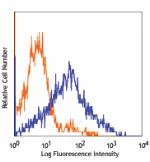
Bone marrow derived-dendritic cells from C57BL/6 mouse stain... -
Alexa Fluor® 647 anti-mouse CD205 (DEC-205)

Bone marrow derived-dendritic cells from C57BL/6 mouse stain... 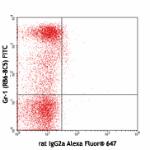
C57BL/6 mouse bone marrow cells stained with Gr-1 (RB6-8C5) ... 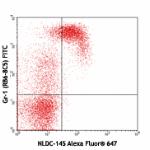
C57BL/6 mouse bone marrow cells stained with Gr-1 (RB6-8C5) ... Fixed whole mount mouse epidermis Langerhans cells were Alex... 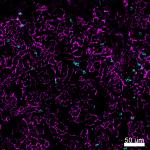
Confocal image of C57BL/6 mouse thymus sample acquired using... 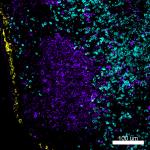
Mice were injected subcutaneously with sheep red blood cells... -
APC anti-mouse CD205 (DEC-205)
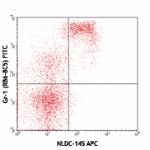
C57BL/6 bone marrow cells stained with Gr-1 (RB6-8C5) FITC a... 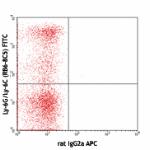
C57BL/6 bone marrow cells stained with Gr-1(RB6-8C5) FITC an... -
PerCP/Cyanine5.5 anti-mouse CD205 (DEC-205)
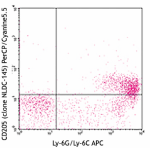
C57BL/6 mouse bone marrow cells stained with CD205 (clone NL... -
PE/Cyanine7 anti-mouse CD205 (DEC-205)

C57BL/6 mouse bone marrow cells stained with CD205 (DEC-205)... -
PE anti-mouse CD205 (DEC-205)
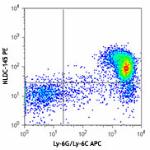
C57BL/6 mouse bone marrow cells were stained with Ly-6G/Ly-6... 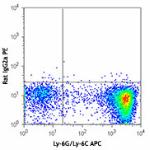
-
Biotin anti-mouse CD205 (DEC-205)

C57BL/6 mouse bone marrow cells were stained with Ly-6G/Ly-6... 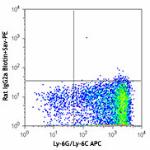
-
PE/Dazzle™ 594 anti-mouse CD205 (DEC-205)
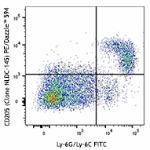
C57BL/6 mouse bone marrow cells were stained with Ly-6G/Ly-6... 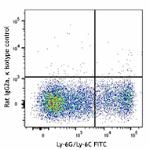
-
APC/Fire™ 750 anti-mouse CD205 (DEC-205)

C57BL/6 mouse bone marrow cells stained with Ly-6G/Ly-6C (cl... -
TotalSeq™-A1010 anti-mouse CD205 (DEC-205)
-
TotalSeq™-C1010 anti-mouse CD205 (DEC-205)
-
TotalSeq™-B1010 anti-mouse CD205 (DEC-205)
 Login / Register
Login / Register 











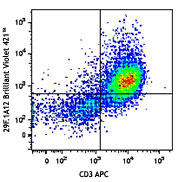
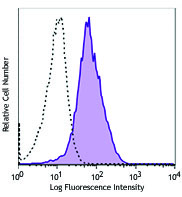
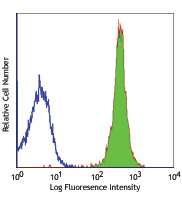
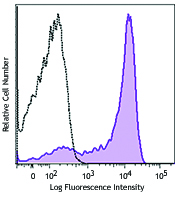




Follow Us